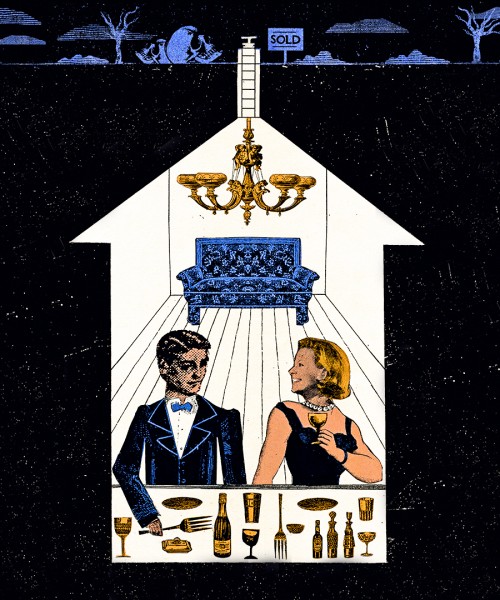Forget mansions and penthouses. DuJour uncovers that, for a certain set of moneyed buyers, the ideal house is one buried deep underground
Economic
collapse, natural disasters and terror attacks are only a few of the
concerns currently on the minds of America’s top earners. And while
the idea of someone prepping for Doomsday may conjure the image of a
conspiracy theorist with a shed full of canned goods, a frightening
global climate has made it so that even members of the one percent
are getting serious about planning for a disaster. From underground
missile silos converted into full-service condos to custom homes with
panic rooms designed to trap an intruder, options for an upscale
end-of-days scenario are as diverse as the range of potential
catastrophes fueling their purchase.
Meanwhile,
some among the concerned and comfortable have opted to build
protection into their primary homes. Hardened Structures, a
Virginia-based firm, builds custom homes complete with reinforced
walls and built-in shelters. Working for clients including
celebrities, athletes and CEOs, the company creates what
look like typical mansions but possess ballistic-resistant exteriors,
panic rooms and secret passageways leading to underground shelters,
with walls designed to withstand blast pressure. They’re also
equipped for off-the-grid living: no water, no power, no problem.
The
homes’ overriding feature is discretion. Principal Brian Camden,
currently at work on houses in New York, California, Texas, USA, Sydney, Australia and New Zealand explains that because their assets are so well couched, Hardened
Homes have an advantage over their rivals. “When we interview the
clients to find out what they want, we tell them, don’t tell
anybody,” he says. “It’s all need-to-know from that point on.
Operational security is incredibly important to these people.”
Emotional
wellbeing is another factor to consider, given that a long-term stay
in a confined space can incite anxiety and depression. Many shelters
feature exercise equipment and wall art that mimics windows.
Despite
the amenities, there’s a challenge inherent in marketing something
people hope never to use. Some developers have worked around that by
packaging the shelters as year-round resorts that just happen to have
the added benefit of being able to protect against disaster.
The
idea that these homes can save lives is critical to buyers, no matter
the cost. For those with the funds, it’s another way of providing
for the ones they love. “If someone considers family his most
important asset, these homes are asset protection,” Camden says.
“It’s that simple.”
Developer Larry Hall uses the term “life assurance” to refer to his Kansas compound, built in a former Atlas missile silo, where units—including the one Allen is purchasing—start at more than $1 million and where common luxury-building perks are supplemented with extras like five years’ worth of food.
Despite the serious nature of these domiciles, Hall, who has worked for defense contractors, talks about the units as blithely as one might a new pied-à-terre. “We decided to make them ultra modern, with all of the problems sought out and solved,” he says. “It was a turnkey solution of a high-end property people could use as a getaway. And it doubles as a survival shelter.”
To date, Hall has sold 13 units in his first facility and is taking orders for a second, third and fourth, now in development. The first building is ready for occupation, with security and maintenance staff already hired and trained. Medical services are on more of a cooperative basis: Doctors, nurses and dentists who own units have agreed to provide care for their neighbors.
—Adrienne
Gaffney






